
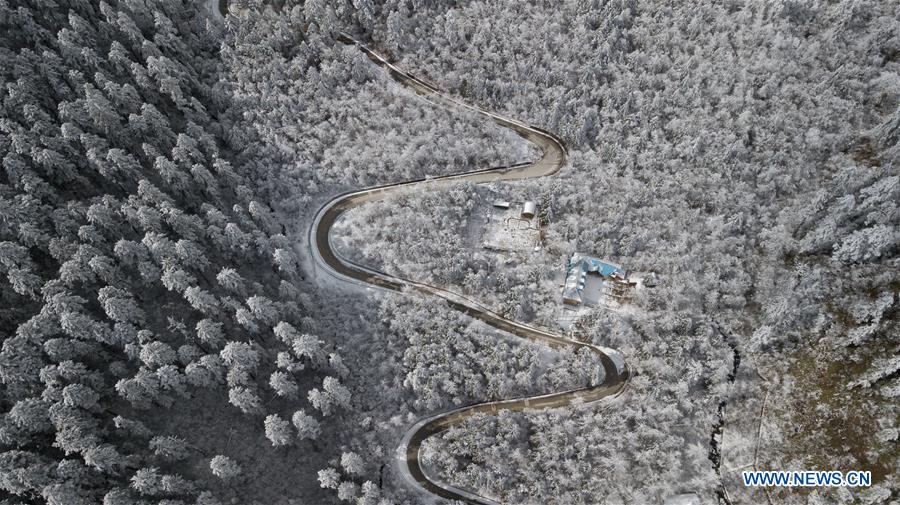
Photo taken on Nov. 24, 2017 shows a base (3,000m) of the Alpine Ecosystem Observation and Experiment Station of Gongga Mountain of the Chinese Academy of Sciences, in Moxi Township of Luding County, southwest China's Sichuan Province. The Alpine Ecosystem Observation and Experiment Station of Gongga Mountain, which has two bases with an altitude of 1,600m and 3,000m respectively, is situated in Hailuogou valley, the east slope of Gongga Mountain. Sixteen permanent scientific researchers and five monitors work at the station established in 1987. The achievements of the station play a key role in solving ecosystem environment construction countermeasures and evaluation of effect of upstream of the Yangtze River. (Xinhua/Jin Liwang)
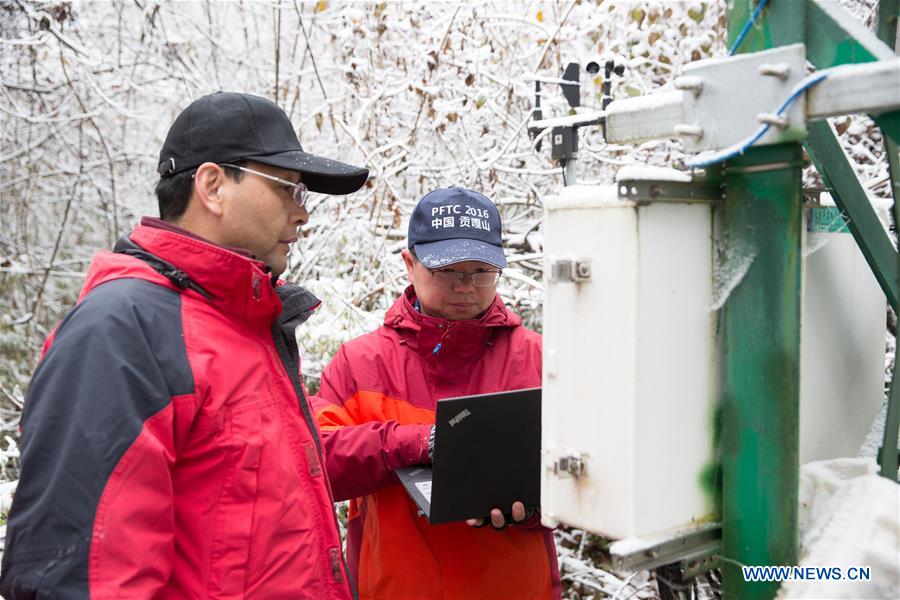
Wang Genxu (L), head of the Alpine Ecosystem Observation and Experiment Station of Gongga Mountain of the Chinese Academy of Sciences, and scientific researcher Ran Fei collect atmosphere data on Gongga Mountain, Moxi Township of Luding County, southwest China's Sichuan Province, Nov. 21, 2017. The Alpine Ecosystem Observation and Experiment Station of Gongga Mountain, which has two bases with an altitude of 1,600m and 3,000m respectively, is situated in Hailuogou valley, the east slope of Gongga Mountain. Sixteen permanent scientific researchers and five monitors work at the station established in 1987. The achievements of the station play a key role in solving ecosystem environment construction countermeasures and evaluation of effect of upstream of the Yangtze River. (Xinhua/Jin Liwang)
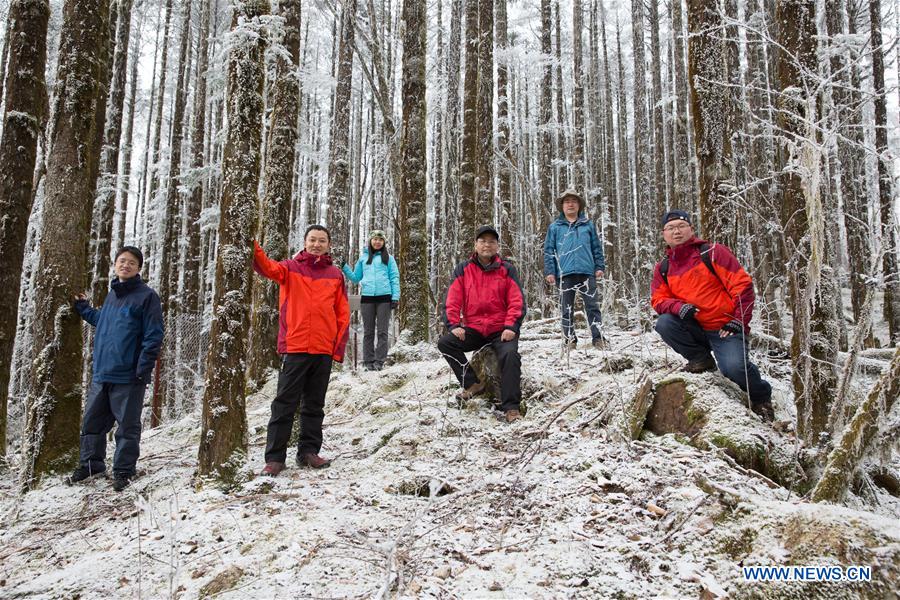
Sun Hongyang, Liu Qiao, Yang Yan, Wang Genxu, Hu Zengyuan and Ran Fei (L to R), scientific researchers of the Alpine Ecosystem Observation and Experiment Station of Gongga Mountain of the Chinese Academy of Sciences, pose for a group photo in the forest of Gongga Mountain, Moxi Township of Luding County, southwest China's Sichuan Province, Nov. 21, 2017. The Alpine Ecosystem Observation and Experiment Station of Gongga Mountain, which has two bases with an altitude of 1,600m and 3,000m respectively, is situated in Hailuogou valley, the east slope of Gongga Mountain. Sixteen permanent scientific researchers and five monitors work at the station established in 1987. The achievements of the station play a key role in solving ecosystem environment construction countermeasures and evaluation of effect of upstream of the Yangtze River. (Xinhua/Jin Liwang)
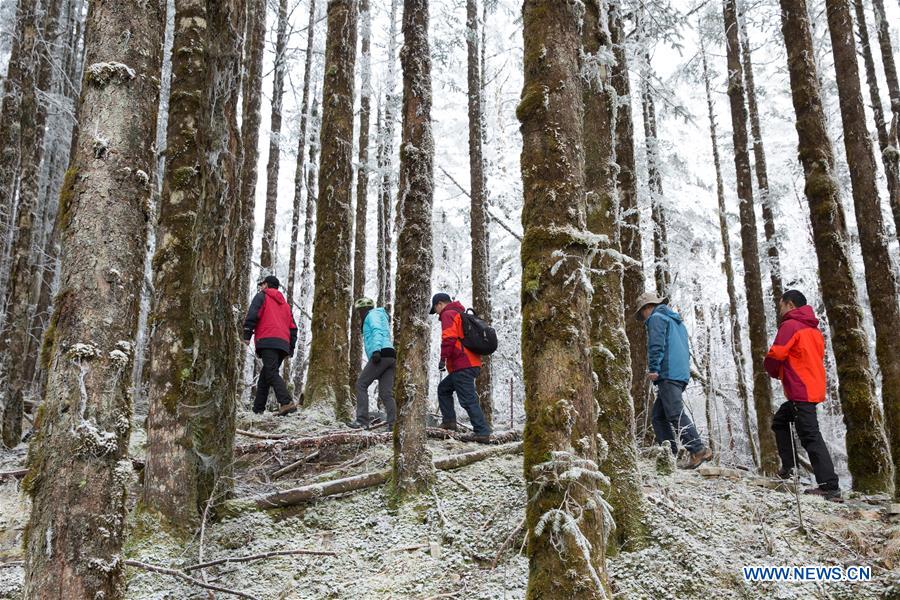
Scientific researchers of the Alpine Ecosystem Observation and Experiment Station of Gongga Mountain of the Chinese Academy of Sciences, carry on a patrol on Gongga Mountain, Moxi Township of Luding County, southwest China's Sichuan Province, Nov. 21, 2017. The Alpine Ecosystem Observation and Experiment Station of Gongga Mountain, which has two bases with an altitude of 1,600m and 3,000m respectively, is situated in Hailuogou valley, the east slope of Gongga Mountain. Sixteen permanent scientific researchers and five monitors work at the station established in 1987. The achievements of the station play a key role in solving ecosystem environment construction countermeasures and evaluation of effect of upstream of the Yangtze River. (Xinhua/Jin Liwang)
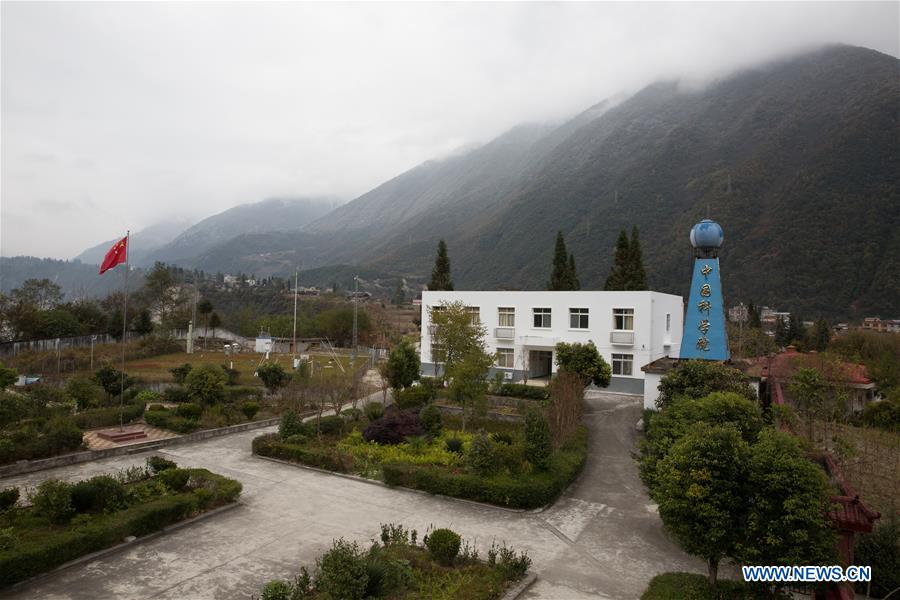
Photo taken on Nov. 24, 2017 shows a base (1,600m) of the Alpine Ecosystem Observation and Experiment Station of Gongga Mountain of the Chinese Academy of Sciences, in Moxi Township of Luding County, southwest China's Sichuan Province. The Alpine Ecosystem Observation and Experiment Station of Gongga Mountain, which has two bases with an altitude of 1,600m and 3,000m respectively, is situated in Hailuogou valley, the east slope of Gongga Mountain. Sixteen permanent scientific researchers and five monitors work at the station established in 1987. The achievements of the station play a key role in solving ecosystem environment construction countermeasures and evaluation of effect of upstream of the Yangtze River. (Xinhua/Jin Liwang)

Liu Qiao (R) and Luo Ji, scientific researchers of the Alpine Ecosystem Observation and Experiment Station of Gongga Mountain of the Chinese Academy of Sciences, collect glacier samples in Hailuogou valley of Gongga Mountain, Moxi Township of Luding County, southwest China's Sichuan Province, Nov. 21, 2017. The Alpine Ecosystem Observation and Experiment Station of Gongga Mountain, which has two bases with an altitude of 1,600m and 3,000m respectively, is situated in Hailuogou valley, the east slope of Gongga Mountain. Sixteen permanent scientific researchers and five monitors work at the station established in 1987. The achievements of the station play a key role in solving ecosystem environment construction countermeasures and evaluation of effect of upstream of the Yangtze River. (Xinhua/Jin Liwang)
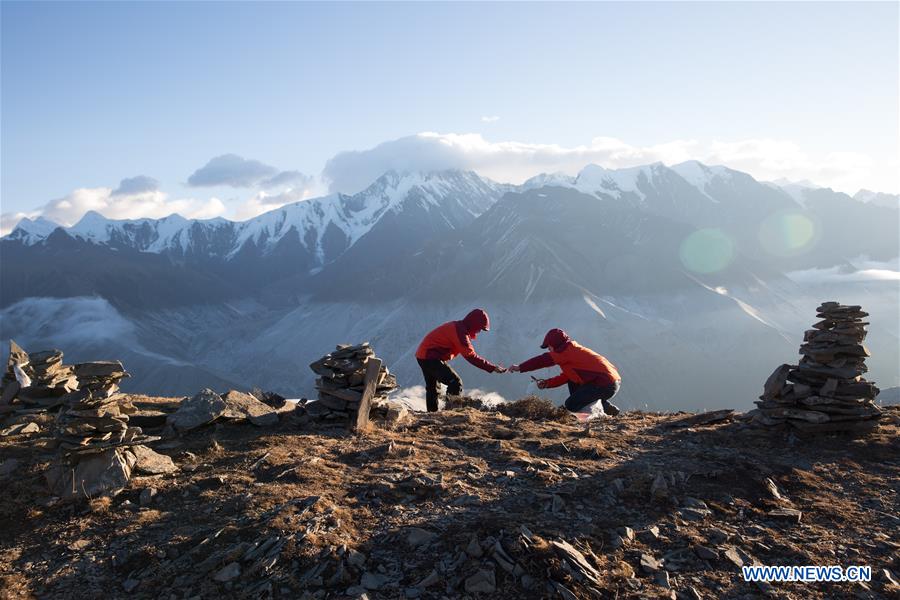
Liu Qiao (L) and Ran Fei, scientific researchers of the Alpine Ecosystem Observation and Experiment Station of Gongga Mountain of the Chinese Academy of Sciences, collect plant samples in the west slope of Gongga Mountain, Moxi Township of Luding County, southwest China's Sichuan Province, Nov. 23, 2017. The Alpine Ecosystem Observation and Experiment Station of Gongga Mountain, which has two bases with an altitude of 1,600m and 3,000m respectively, is situated in Hailuogou valley, the east slope of Gongga Mountain. Sixteen permanent scientific researchers and five monitors work at the station established in 1987. The achievements of the station play a key role in solving ecosystem environment construction countermeasures and evaluation of effect of upstream of the Yangtze River. (Xinhua/Jin Liwang)

Wu Yanhong, Sun Hongyang, Bing Haijian and Luo Ji (L to R), scientific researchers of the Alpine Ecosystem Observation and Experiment Station of Gongga Mountain of the Chinese Academy of Sciences, collect samples in the forest of Gongga Mountain, Moxi Township of Luding County, southwest China's Sichuan Province, Nov. 21, 2017. The Alpine Ecosystem Observation and Experiment Station of Gongga Mountain, which has two bases with an altitude of 1,600m and 3,000m respectively, is situated in Hailuogou valley, the east slope of Gongga Mountain. Sixteen permanent scientific researchers and five monitors work at the station established in 1987. The achievements of the station play a key role in solving ecosystem environment construction countermeasures and evaluation of effect of upstream of the Yangtze River. (Xinhua/Jin Liwang)

86-10-68597521 (day)
86-10-68597289 (night)

52 Sanlihe Rd., Xicheng District,
Beijing, China (100864)

